WORMCON CTF - 2021

WORMCON CTF occurred this weekend and I had a fun time digging through a handful of Forensics and Networking challenges.
Network At Risk (Part 2)
This challenge provided a PCAP file that contained quite a bit of FTP traffic. As I’m sure most know, FTP does not encrypt data while in transit. This provided me with a good starting point to try and gather some information.
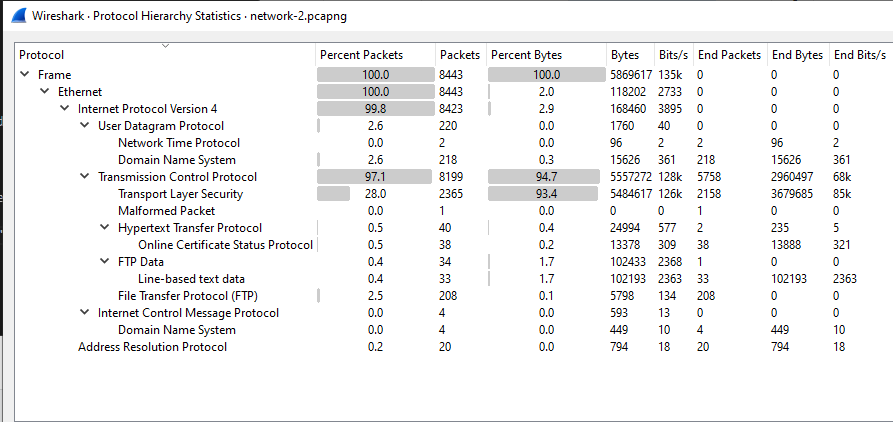
Figure 1: Protocol hierarchy
Sure enough, one of the first things I noticed in the FTP requests is a username and password. I’ll hold onto this information for later.

Figure 2: FTP login
Next I decided to look for any interesting files that would’ve been transferred in this session. I saw a B4ckF1r3.zip file a bit later on in the PCAP. Maybe we can export this file from the PCAP to see what’s inside?

Figure 3: Interesting file
Wireshark makes it easy enough to export HTTP objects from a capture, but what about data from other protocols? I’ll need to dive into file carving for this. A quick Google search shows that .zip files begin with a hex file header of 50 4B 03 04. I searched for this in the PCAP to find when the zip file would’ve been transferred. A quick “Follow TCP Stream” of packet 7788 will bring up a window where raw packet data can be exported.

Figure 4: Zip file search

Figure 5: Zip file export
At this point, it’s fairly trivial save the raw B4ckF1r3.zip file and attempt to unzip the archive. The archive looks to require a password in order to un-compress. The password pl3as3S4v3Th3w0rmC0n that was observed earlier unzips things successfully and a shell script contains the flag.

Figure 6: Flag shell script
Network At Risk (Part 3)
I continued down the PCAP analysis road and attempted to tackle Part 3 of the Network at Risk challenges. At first glance for this one, I noticed that ~90% of the packets in this PCAP related to Real-time Transport Protocol (RTP). A little research shows that RTP is typically used for VoIP. This gave me the hint that I likely needed to recover an audio file with the flag.
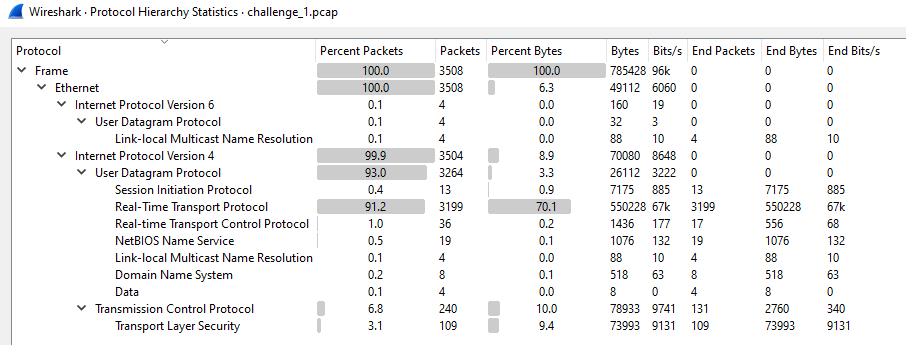
Figure 7: Protocol hierarchy
Additionally, I noticed with this capture that there were a handful of DNS requests. These packets actually gave me a hint on which tool could be used to solve the challenge. Xplico, specifically the PCAP2WAV tool, allows for network capture files to be decoded into WAV audio files.

Figure 8: DNS requests
I checked out https://pcap2wav.xplico.org and uploaded the network capture. This spat out two WAV files that I could listen to where the phrase “welcome to the world of voip” was repeated several times. This ended up being the flag, wormcon{welcome_to_the_world_of_voip}.
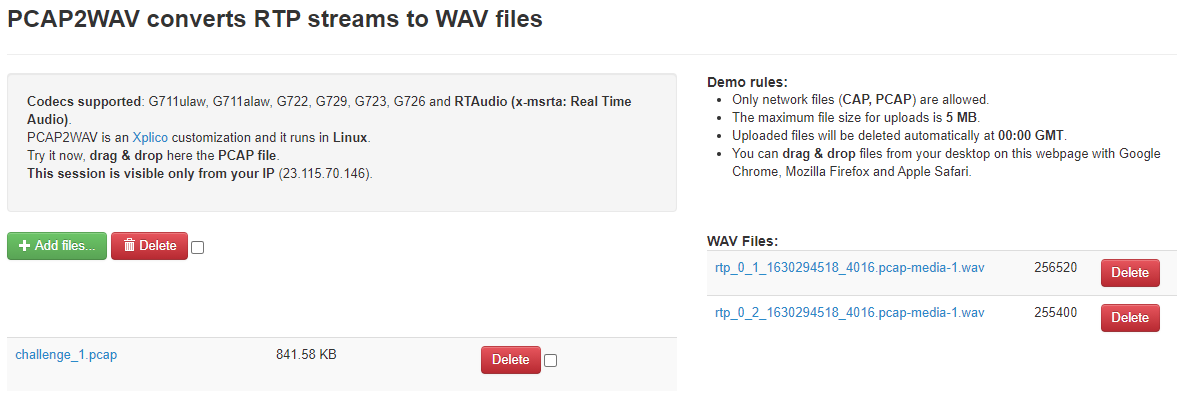
Figure 9: Xplico PCAP2WAV
Network At Risk (Part 4)
Last but not least, I dove into Part 4 of this challenge series. With this network capture, I observed a bunch of 802.11 packets. This suggested that wireless networks would likely be involved.
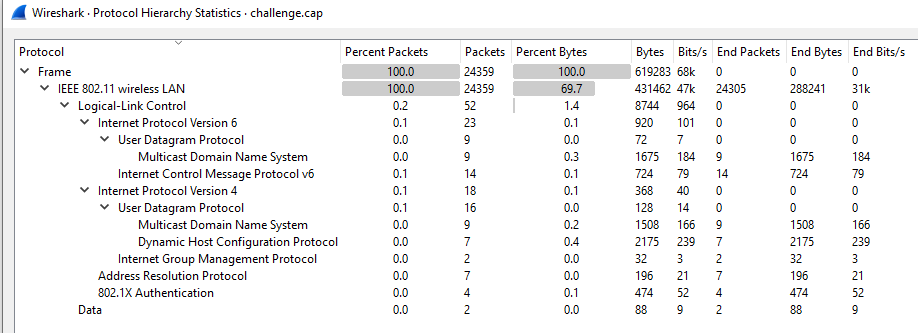
Figure 10: Protocol hierarchy
I took particular attention to the 802.1x authentication packets and learned from these that WPA was likely being used. WPA (TKIP) is an inherently insecure protocol for wireless networks and allows attackers to be able to brute force the network password if specific packets are captured / sniffed. Lucky for us, these packets are contained in this PCAP.

Figure 11: WPA handshake
Aircrack-ng is the tool of choice for this challenge. With the WPA authentication handshake packets in hand, my goal was to try and offline crack what the pre-shared WPA key for the DeathStar wireless network would’ve been. I fed the entire PCAP into Aircrack-ng and loaded the wordlist, rockyou.txt, that comes with Kali Linux. Before long, I had the WPA password as well as enough information for this challenges flag, wormcon{P@$$w0rd_82:25:fa:ee:ed:91}.
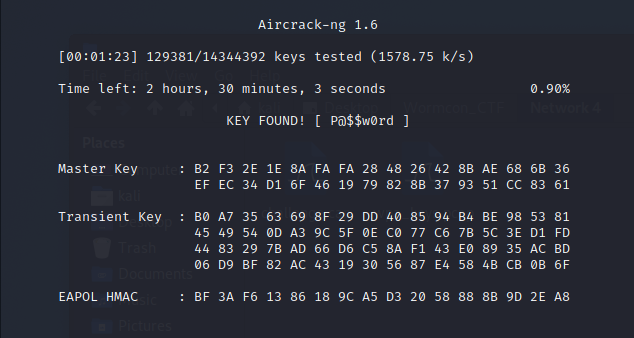
Figure 12: Aircrack-ng PSK brute-force
wormonetics - Part 1
It’s been a while since I’ve seen a forensics challenge involve a full system disk image like this one had. At work, I’ve been diving quite a bit into forensics and saw this as an opportunity to fire up Autopsy to try and solve this one.
Given the disk image, the goal of this first challenge was to try and find the email address of a threat actor that one of the fictitious company’s employees was interacting with. Additionally, part of the flag also required us finding what our insider’s first name was. I installed Autopsy and got to digging.
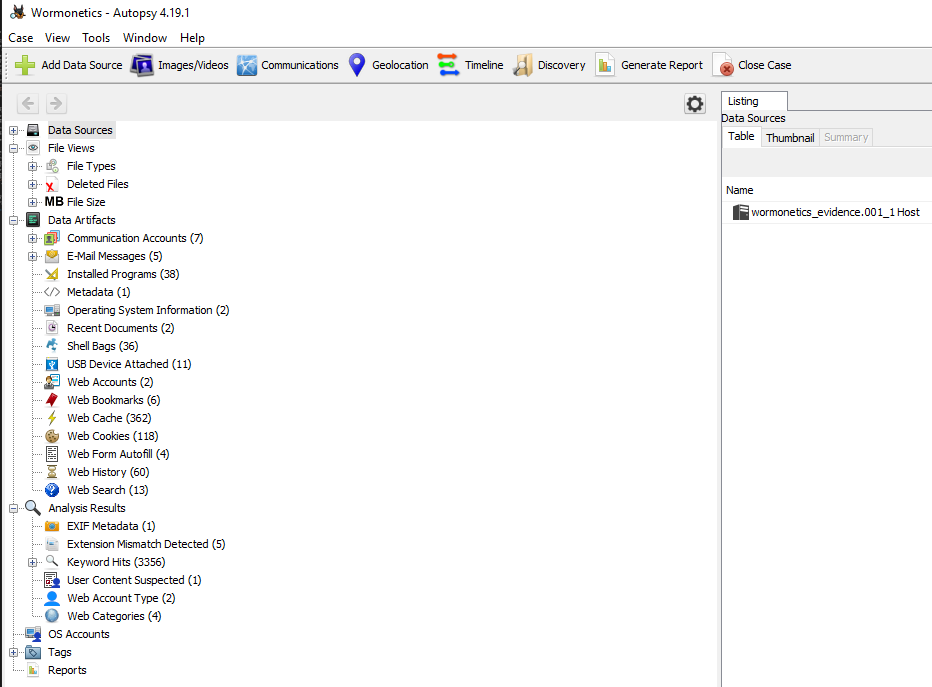
Figure 13: Autopsy image
Autopsy makes it easy to sift through system artifacts and parse out items of interest. Specifically, there is a section within Data Artifacts called E-mail Messages. This is where I found a peculiar email message that our intern, harry had sent to hackwithdark@outlook.com on 08/06/2021. We can place these two pieces of information into flag format and claim our points, wormcon{harry_hackwithdark@outlook.com}.
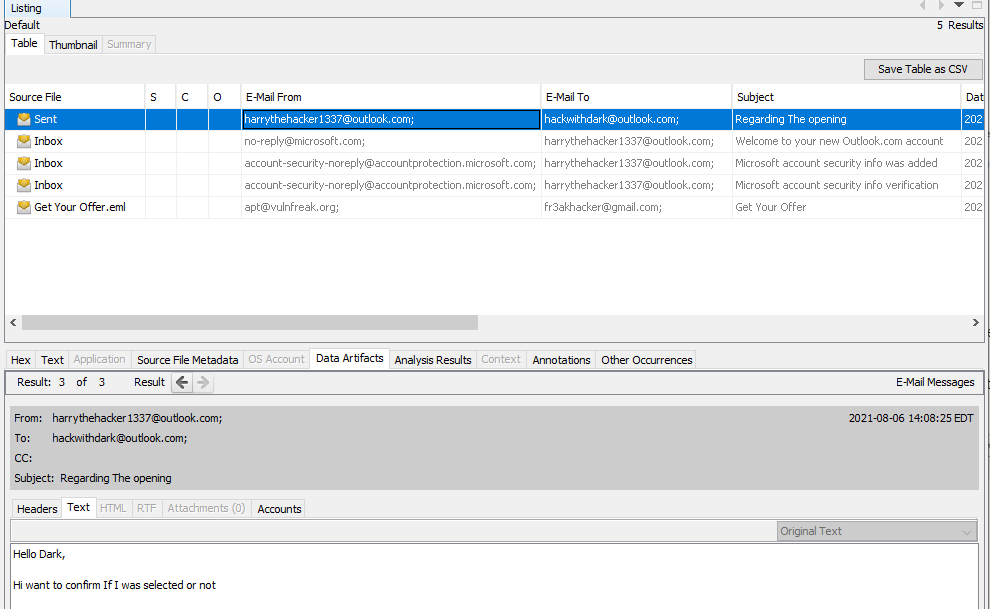
Figure 14: Hacker email
wormonetics - Notes
I unfortunately didn’t have the time to get through the rest of the wormonetics challenges before WORMCON CTF ended but I did see an additional file of interest that I imagine would’ve been helpful in finding additional flags. If I get some time in the near future I will try and see about solving Part 2 and 3!
Within the E-mail Messages section of Autopsy I noticed a Get Your Offer.eml message that had an oddly named attachment.


Figure 15: Suspicious email
If we check the hash for this archive file in VirusTotal, a number of vendors denote the archive, along with the XLS spreadsheet inside as malicious.
It’s likely that the XLS file contains VBA macros which can be reversed. Malicious Microsoft Office files typically serve as droppers / downloaders for other types of malware. I suspected that Part 2 or 3 of this challenge series involved digging through the VBA code.
My go-to tool for extracting malicious Office VBA macros is oledump by Didier Stevens. I took a quick peak at the annual_report.xls file and extracted the macros.
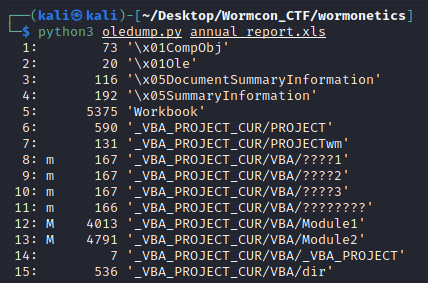
Figure 16: VBA Macros
A common technique that I’ve observed malware authors use with malicious macros is to encode various command execution strings as blobs of data in VBA code. The array being instantiated in the 2nd VBA macro of the XLS file caught my eye and I suspect contains further information for uncovering the flag for this challenge.
